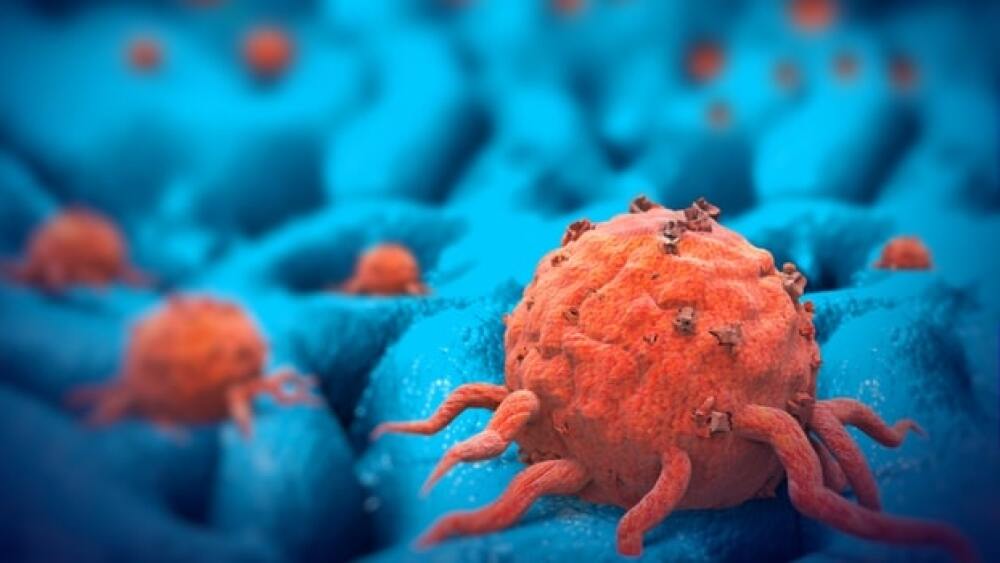New research shows T cells can be engineered to migrate more effectively inside tumor microenvironments, raising hopes of reproducing the remarkable outcomes seen for certain hematological cancer patient subsets in broader populations and indications.
New research from a University of Minnesota team shows T cells can be engineered to migrate more effectively inside tumor microenvironments, raising hopes of reproducing the remarkable outcomes seen for certain hematological cancer patient subsets in broader populations and indications.
T cells have been key to two promising families of cancer immunotherapies, chimeric antigen receptor (CAR) T cells and immune checkpoint inhibitors. After two new U.S. Food and Drug Administration (FDA) approvals earlier this year for Bristol Myers Squibb’s Breyanzi (lisocabtagene maraleucel) and Abecma (idecabtagene vicleucel), there are now five marketed CAR T cell therapies for a range of hematological cancers, including large B-cell and mantle cell lymphoma, acute lymphoblastic leukemia and multiple myeloma. These therapies are patient-derived T cells engineered to express a CAR that directs them to a specific tumor.
By contrast, immune checkpoint inhibitors function by targeting sets of natural immune system brakes, either on a tumor or directly on immune cells. The seven FDA-approved immune checkpoint inhibitors allow T cells to kill a growing list of hematological and solid tumors, and show impressive outcomes – but in a fraction of patients.
Both approaches have been more effective in hematological cancers, and one obstacle in solid tumors is a literal barrier. T cells have to migrate through the complex, dense, and rigid tumor microenvironment, which can misdirect and slow down the immune cells.
The new paper, published in Nature Communications, shines a light on how T cells move within these physical features, informing new methods to rationally engineer the cells for more effective therapies.
T cell engineering has focused on cancer identification and targeting, said Paolo Provenzano, associate professor at the University of Minnesota Masonic Cancer Center and an author on the paper.
“We’re trying to add on a piece to that: they know what to kill, how do they get there?” he said.
The researchers looked at pancreatic ductal adenocarcinoma (PDAC), a particularly fibrotic cancer known for limited cytotoxic T cell infiltration. Provenzano and colleagues had previously shown that antifibrotic therapies could improve immune cell infiltration in PDAC, but the group is now focused on rationally designing physical attributes of the T cells themselves.
Provenzano’s team started by testing T cell migration on specialized artificial 2-D nanotextured platform that mimicked elements of the stromal extracellular matrix of tumors. T cells use lamellipodia and filopodia to sense biophysical cues and guide migration, and can switch between more flexible and stiffer phenotypes, to adapt to different conditions.
“They’re never all or one, they’re on this sliding scale,” mediated by the muscle-like contractions of microtubules, Provenzano said.
The researchers found that while in a more amoebalike phenotype, cells had enhanced speed and motility, improving how quickly and effectively the cells could navigate the matrix. The researchers used the chemotherapeutic nocodazole, known to destabilize microtubules, to increase contractility and induce more amoebalike phenotypes, and another chemotherapeutic, paclitaxel, for the inverse. Cells with the nocodazole-induced amoebalike phenotypes could contract into smaller balls, and could shoot out protrusions faster, allowing for better motility than the paclitaxel-induced stiffer ones, and migrating between 50-100% faster in artificial 3-D matrices and mouse PDAC model tumor slices.
Thinking about personalized combination approaches to cancer treatment, this raised a red flag for Provenzano, as taxane agents are commonly used to treat solid tumors like breast and pancreatic cancer. The findings suggest “certain chemotherapies might not be right if you’re trying to elicit the body’s own immune response against these tumors, or mixing with a T cell therapy,” he said.
The effect of chemotherapies on T cell microtubules is transient, so next the researchers explored a genetic engineering approach, using CRISPR technology to engineer T cells lacking GEF-H1, a gene they hypothesized mediates cell contractility. In a 3-D matrix, the knockout lines migrated 50% compared with controls.
Provenzano envisions different T cell engineering tweaks as part of the increasingly personalized approach to cancer treatment. Cells engineered to migrate faster have promise particularly in fibrotic tumor microenvironments, where T cells move about half as fast.
“They get to sample less volume before they become exhausted,” he said.
T cell exhaustion is a key limitation for CAR-T therapies and combining them with T cells that are physically optimized for faster migration could be synergistic in these patients.
If tumors are like unique obstacle courses for T cells, though, then different “athletes” – or teams – might be suited for different cancer types and patients.
“Maybe we engineer five different T cells that navigate different obstacles, then mix them in cocktail and bring them back in. That’s what we’re thinking as our ultimate goal,” he said.
Provenzano’s lab is now using physics-based mathematical models to predict what the optimal cell would be.
“We don’t know the most physically optimized cell looks like yet,” he said. But the paper represents just the first foray into the optimization process for just the first athlete. “This will be what at least half my lab will be publishing on for the next decade.”
There is active interest in the approach, but Provenzano said the work is not yet being commercialized. He hopes to find a partner with an ongoing T cell therapy clinical trial that could add an arm with his group’s physically optimized cells, but trials are probably still years away.





